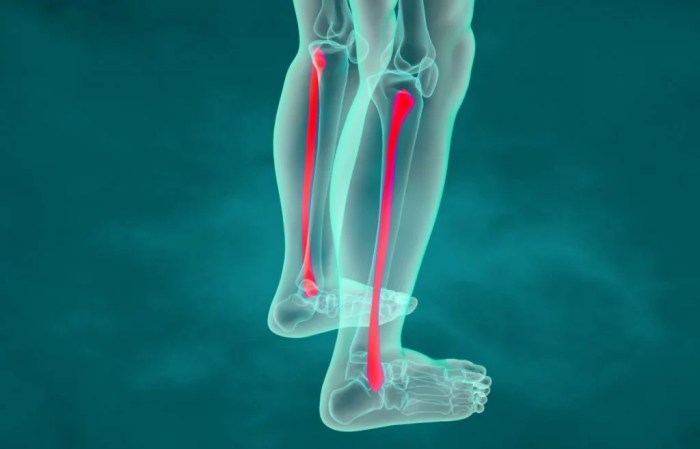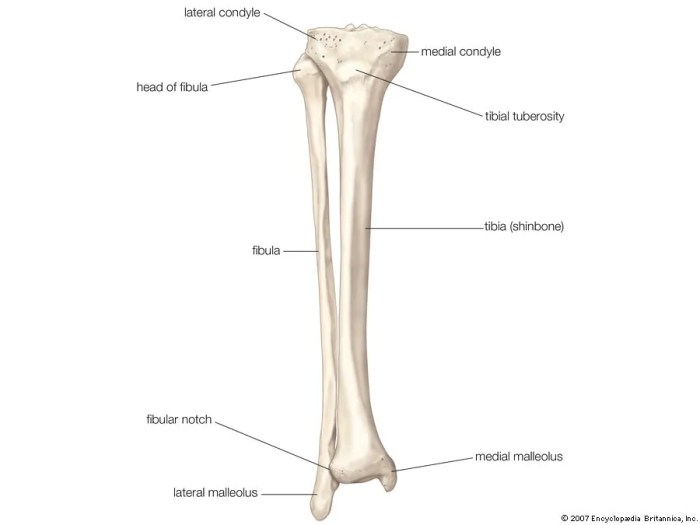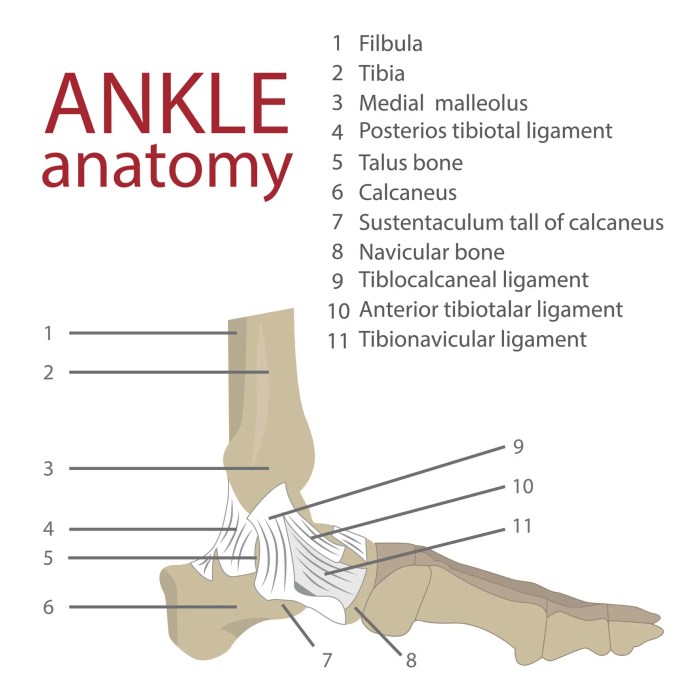Head of fibula sticks out – When it comes to the head of the fibula, it’s not just about sticking out; it’s about understanding its crucial role in our musculoskeletal system. Join us as we delve into the intricacies of this fascinating bone, uncovering its anatomy, function, and clinical significance.
From its intricate structure to its involvement in knee stability, the head of the fibula is a hidden gem that deserves our attention. Let’s unravel its mysteries and appreciate its contributions to our overall mobility.
Definition and Anatomy: Head Of Fibula Sticks Out

The head of the fibula is the proximal end of the fibula, a long bone located on the lateral side of the lower leg. It is a rounded, bulbous structure that articulates with the tibia and the patella.
Location and Shape
The head of the fibula is located just below the knee joint, on the lateral aspect of the tibia. It has a smooth, convex superior surface that articulates with the lateral condyle of the tibia. The head also has a small, concave facet on its anteromedial aspect that articulates with the patella.
Structure, Head of fibula sticks out
The head of the fibula is composed of cancellous bone surrounded by a thin layer of cortical bone. It is attached to the shaft of the fibula by a narrow neck. The head is covered by a layer of articular cartilage that allows it to glide smoothly against the tibia and patella during movement.
Function and Biomechanics

The head of the fibula plays a pivotal role in stabilizing the knee joint and facilitating movement. It serves as a crucial attachment point for ligaments and muscles that provide structural support and control the range of motion.Biomechanically, the head of the fibula interacts with the adjacent structures to ensure optimal joint function.
It articulates with the lateral tibial condyle, forming the lateral compartment of the knee joint. This articulation allows for a gliding motion, which is essential for proper knee flexion and extension.
Ligamentous Attachments
The head of the fibula serves as an attachment site for several key ligaments:
Lateral collateral ligament (LCL)
This ligament originates from the head of the fibula and inserts onto the lateral femoral condyle. It provides stability to the knee joint, preventing excessive lateral movement.
Popliteofibular ligament
This ligament connects the head of the fibula to the posterior aspect of the tibia. It helps to stabilize the knee joint in flexion and prevents posterior displacement of the tibia.
Fibular collateral ligament
This ligament runs from the head of the fibula to the lateral meniscus. It provides stability to the lateral meniscus and prevents its displacement during knee movement.
Muscle Attachments
The head of the fibula also serves as an attachment point for several muscles that contribute to knee function:
Biceps femoris
This muscle originates from the head of the fibula and inserts onto the lateral condyle of the tibia. It assists in knee flexion and lateral rotation.
Popliteus muscle
This muscle originates from the lateral surface of the head of the fibula and inserts onto the medial tibial condyle. It unlocks the knee joint and assists in external rotation of the tibia.
Overall Knee Function
The head of the fibula contributes to overall knee function by:
- Providing stability to the lateral compartment of the knee joint
- Facilitating smooth gliding motion during flexion and extension
- Limiting excessive lateral and posterior movement
- Assisting in muscle actions that control knee movement
Clinical Significance

The head of the fibula, a bony prominence at the knee joint, plays a crucial role in knee function and stability. Abnormalities or injuries to this structure can significantly impact mobility and overall well-being.
Knee Injuries
Trauma to the knee, such as ligament tears or dislocations, can affect the head of the fibula. Fractures of the fibula head, known as fibular head fractures, can occur during high-impact activities like sports or accidents. These fractures can disrupt the stability of the knee joint, causing pain, swelling, and difficulty with movement.
Arthritis
Osteoarthritis, a degenerative joint disease, can affect the head of the fibula, leading to cartilage loss and bone spurs. The resulting inflammation and pain can limit knee function and range of motion.
The head of the fibula is a common site for pain and swelling. The fibula is a long, thin bone that runs along the outside of the leg. It is attached to the tibia, or shinbone, at the knee and ankle.
The head of the fibula is located at the top of the bone, just below the knee. Pain and swelling in this area can be caused by a variety of factors, including injury, arthritis, or gout. If you are experiencing pain and swelling in the head of your fibula, it is important to see a doctor to determine the cause and get treatment.
Key in the sea crossword can provide more information about the causes of pain and swelling in the head of the fibula.
Diagnostic Techniques
To assess the health of the head of the fibula, healthcare professionals may use various diagnostic techniques, including:
- Physical examination:The doctor will examine the knee for tenderness, swelling, and range of motion.
- X-rays:These imaging tests provide detailed views of the bones, revealing fractures or other abnormalities in the head of the fibula.
- Magnetic resonance imaging (MRI):This advanced imaging technique uses magnetic fields and radio waves to create cross-sectional images of the knee, showing soft tissues like ligaments and cartilage.
Surgical Implications

Surgical interventions involving the head of the fibula are commonly performed for procedures such as knee arthroscopy and ligament reconstruction. These surgeries require careful planning and execution to minimize risks and complications.
Surgical Approaches
- Anterolateral Approach:Provides direct access to the head of the fibula and is often used for ligament reconstruction.
- Posterolateral Approach:Allows visualization of the lateral aspect of the head of the fibula and is used for knee arthroscopy.
Potential Risks and Complications
- Nerve Damage:The common peroneal nerve is located near the head of the fibula and can be injured during surgery.
- Vascular Injury:The peroneal artery and vein run adjacent to the head of the fibula and can be damaged during surgical dissection.
- Fibular Fracture:Excessive manipulation or drilling of the head of the fibula can lead to fractures.
Surgical Techniques for Repair and Reconstruction
Surgical techniques used to repair or reconstruct the head of the fibula vary depending on the nature of the injury or disease. Common procedures include:
- Internal Fixation:Fractures of the head of the fibula can be stabilized with screws or plates.
- Tendon Transfers:Damaged tendons can be transferred to the head of the fibula to restore function.
- Bone Grafting:In cases of bone loss, bone grafts can be used to reconstruct the head of the fibula.
Commonly Asked Questions
What exactly is the head of the fibula?
The head of the fibula is the proximal end of the fibula, a long, thin bone located on the outer side of the lower leg.
What’s the significance of its location?
Its position at the knee joint makes it crucial for stability and movement.
Can abnormalities in the head of the fibula affect mobility?
Yes, abnormalities can lead to pain, instability, and reduced range of motion in the knee.